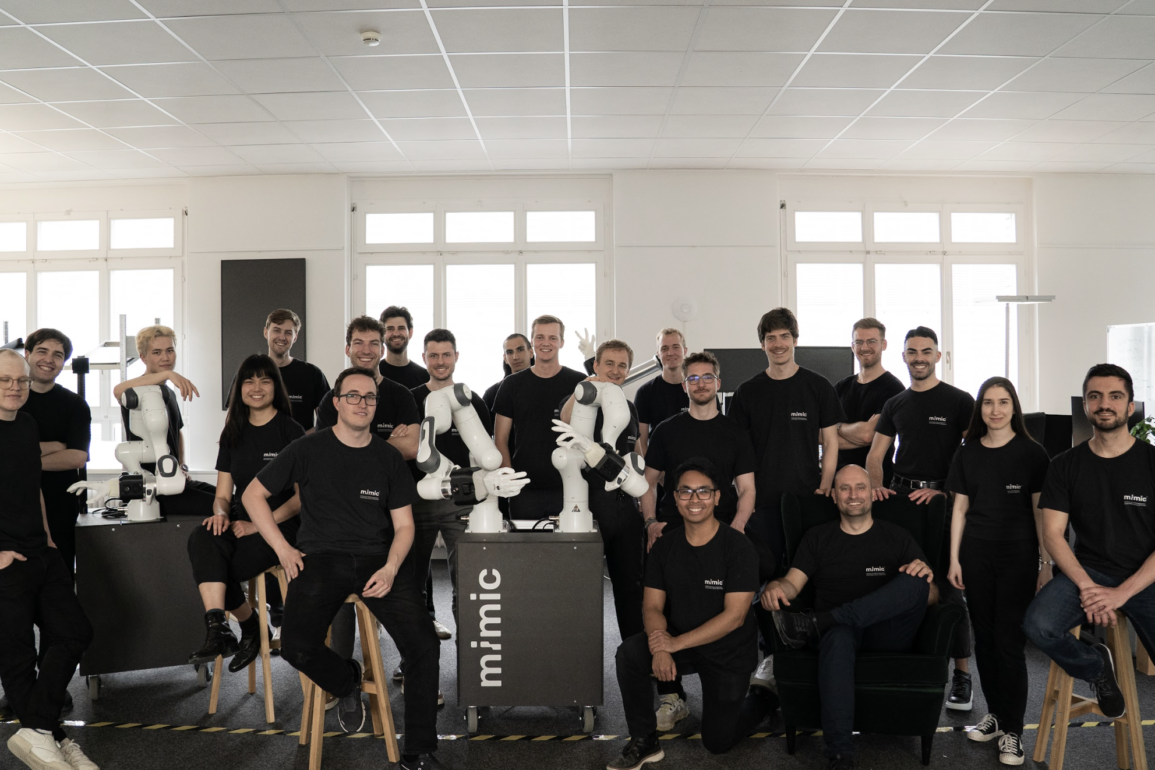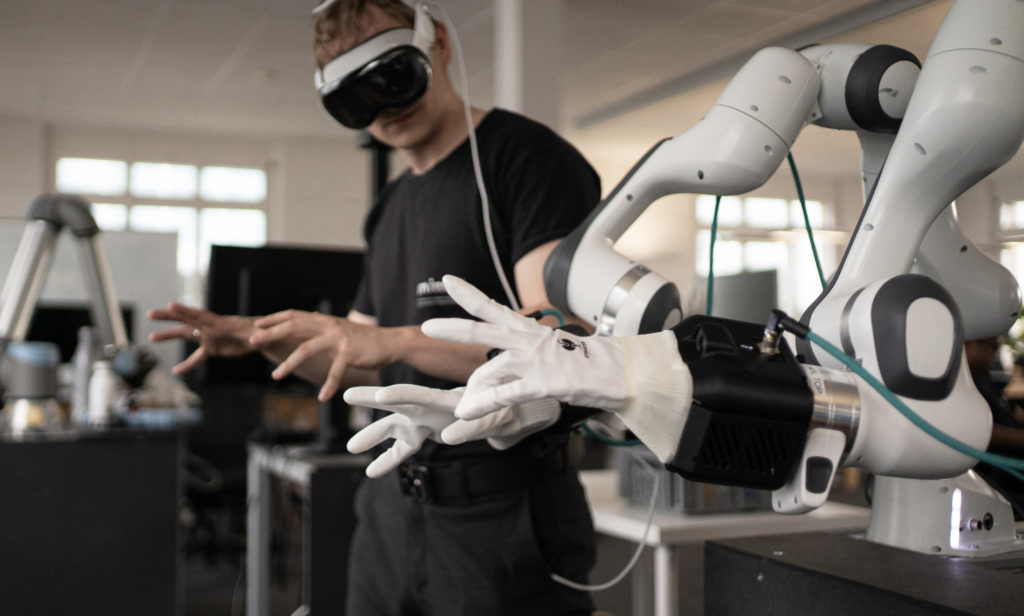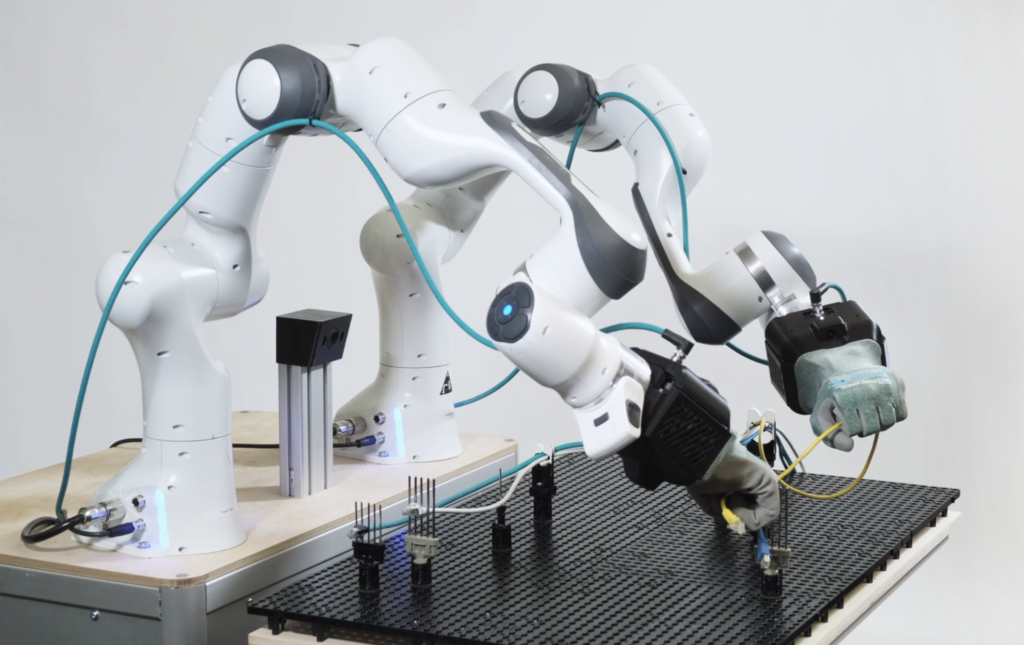The global race to build dexterous, general-purpose robots has mostly been written in the language of Silicon Valley bravado and Shenzhen speed. But in Zurich, a small team of engineers at Mimic believes that Europe still has something to say about the future of “physical AI.”
The Swiss startup announced on Monday that it has raised $16 million in a seed round led by Elaia and Speedinvest, with participation from Founderful, 1st Kind, 10x Founders, 2100 Ventures, and the Sequoia Scout Fund. The funding, part of over $20 million raised to date, will accelerate the company’s development of a foundation AI model for robotics and its dexterous humanoid hands — capable, it claims, of performing the kind of fine motor tasks that even the most advanced machines have yet to master.
The ambition is not to build a full humanoid but something subtler: hands that can learn from humans and work seamlessly with existing industrial robots. “Humanoids are exciting, but there aren’t many industrial scenarios where the full-body form factor truly adds value,” said Stephan-Daniel Gravert, co-founder and CPO at mimic. “Our approach pairs AI-driven dexterous robotic hands with proven, off-the-shelf robot arms to deliver the same capabilities in a way that is much simpler, more reliable and rapidly deployable.”
It is a pragmatic response to a field crowded with hype. While Figure AI, Tesla, and 1X Technologies dominate headlines with billion-dollar bets on full humanoids, mimic is betting on deployability over drama. Instead of chasing robots that walk like humans, it is teaching machines to work like them — through a data-centric approach that turns human demonstrations into foundation models for physical motion.
The company’s technology relies on skilled operators wearing data-capture devices on real factory floors, recording the way they handle objects and tools. These recordings train AI systems through imitation learning, producing models that can mimic — literally — human dexterity. Elvis Nava, the co-founder and CTO, says the goal is nothing less than to “automate manual labour in a way that simply was not possible before.”
That promise lands at a critical moment for industrial economies under strain. Aging workforces, rising production costs, and reshoring trends have converged to create acute labor shortages in manufacturing and logistics. Analysts project the global market for humanoid and dexterous robots could reach $38 billion by 2035, within a broader automation market valued between $200 billion and $1 trillion by 2040.
“Our general purpose AI models allow us to automate manual labour in a way that simply was not possible before,” Nava said. “Thanks to our unique focus on human-like dexterity and human data, we are competitive at the robot foundation model layer as well as the application layer.”
Yet mimic’s announcement also doubles as a quiet critique of the current robotics narrative — one that has often prioritized spectacle over scalability. The company’s co-founder Stefan Weirich put it plainly: “We’re at an inflection point in robotics where learning-based systems meet real industrial needs. We make dexterity deployable at scale, closing the gap between what AI can do in the lab and what factories actually need.”
That notion — “deployable dexterity” — is where mimic’s story becomes more interesting than its size. Europe has long struggled to keep pace with American and Chinese giants in AI, often constrained by regulation and limited venture capital. But companies like mimic, backed by investors who see opportunity in Europe’s engineering depth, are pushing a different vision: one built not on market domination but on precision and reliability.
“At Speedinvest, we’ve always believed that Europe’s strength lies in marrying world-class engineering with foundational research,” said Andreas Schwarzenbrunner, General Partner at Speedinvest. “With mimic, we see exactly that: a platform that unlocks human-level dexterity with frontier AI and solves billion-dollar problems on factory floors today. This is the moment Europe steps forward to compete and lead in the new era of AI and robotics.”
The enthusiasm from investors like Elaia’s Clément Vanden Driessche, who called dexterous manipulation “one of the most challenging problems in physical AI,” underscores a growing recognition that artificial intelligence must extend beyond words and pixels. “mimic’s breakthrough approach integrates a proprietary robotic hand, state-of-the-art foundation models for robotics, and novel data acquisition and training methods,” said Vincent Faber of Elaia.
Still, a question lingers: Can a small European startup meaningfully compete with the scale and hardware muscle of U.S. and Chinese rivals? Mimic’s strategy — leveraging off-the-shelf components and focusing on specialized dexterity rather than humanoid spectacle — may offer one of the few sustainable paths forward.
The company’s early pilots with Fortune 500 manufacturers and global logistics providers suggest a pragmatic route: not reinventing robots, but teaching them to feel. If mimic succeeds, it could turn Europe’s cautious precision into a global advantage — and remind the world that the future of AI won’t just be written in code, but in motion.






